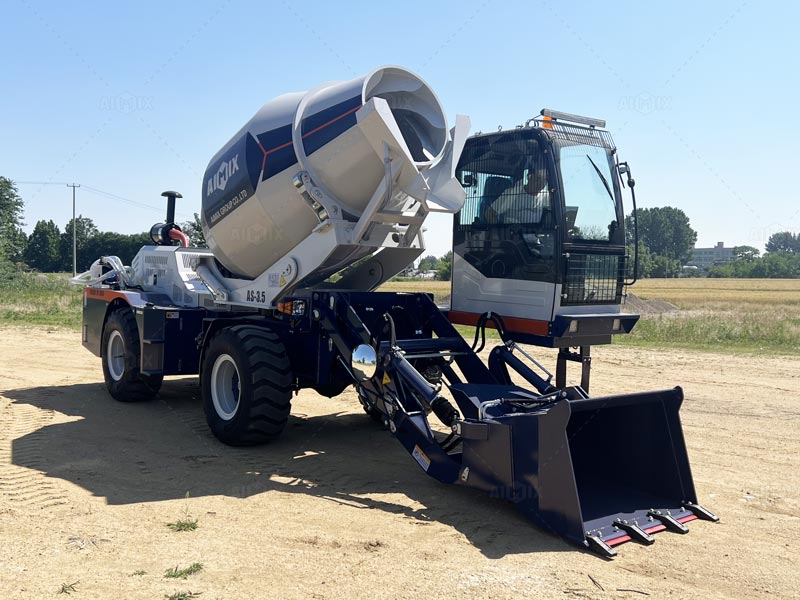Modern construction projects demand precision, speed, and efficiency. One of the innovations that’s transforming how concrete is mixed and poured is the integration of intelligent weighing technology into self-loading concrete mixers. Unlike traditional mixers, which rely on manual input or rough estimations, new-generation machines come equipped with digital systems that provide accurate, real-time data. This blog will explore how these smart systems work, how they differ from conventional equipment, and why they are an ideal solution for complex job sites.
Achieving the right mix ratio is crucial to concrete performance. Too much water, aggregate, or cement can compromise strength and durability. Traditional methods rely heavily on the experience of the operator and often involve significant guesswork. In contrast, smart self-loading concrete mixers offer an automated process that improves accuracy while reducing human error.
With intelligent weighing systems, each material—cement, sand, gravel, and water—is measured precisely before mixing. This ensures consistent quality in every batch, which is essential for projects like bridges, tunnels, or multi-story buildings where safety and performance are non-negotiable.

The self-loading concrete mixer is more than just a transportable mixing unit; it functions as a mobile batching plant. The intelligent weighing system integrates digital load sensors on the shovel and in the drum, which measure the weight of each component as it's loaded. The on-board computer then calculates the required amount of each material based on a preset formula selected by the operator.
These systems often come with a touchscreen interface, allowing the operator to select from multiple mixing formulas depending on the requirements of the job site. Whether you're preparing concrete for a road base or structural columns, the mixer can adjust the proportions accordingly. This level of customization is a game-changer in projects that demand varied mix designs throughout the day.
Traditional mixers, whether truck-mounted or stationary, typically rely on separate batching plants to deliver premixed concrete. In many cases, workers use manual methods to estimate the amount of each material being added. This process can be time-consuming, labor-intensive, and prone to inconsistencies—especially in remote or high-volume projects.
On the other hand, self-loading concrete mixers equipped with smart weighing systems bring automation to the field. Operators can be trained in under 10 minutes to use the interface, select mix designs, and start batching with minimal oversight. This minimizes labor requirements and reduces the potential for error, which translates into higher productivity and reduced waste.
In Latin America and other regions with diverse terrain and infrastructure challenges, the flexibility of a self-loading concrete mixer(hormigonera autocargable) with intelligent weighing is invaluable. Roads, housing, and energy projects may each require different concrete strengths and volumes. The ability to switch formulas and adjust batch sizes in real-time helps contractors respond to changing site conditions quickly.
Moreover, projects in rural or mountainous areas often lack access to centralized batching plants. Self-loading units offer an all-in-one solution—load, weigh, mix, and pour—on-site. The intelligent system keeps a digital log of all batches produced, providing quality control records that can be reviewed for compliance and auditing purposes.
One of the most compelling reasons to invest in a self-loading concrete mixer is its long-term cost savings. While the initial self-loading concrete mixer price may be higher than a basic mixer, the return on investment is significantly greater. Reduced labor costs, minimized material waste, and consistent quality mean fewer delays and fewer rejected pours.
Contractors also save on logistics since there is no need to transport premixed concrete from distant plants. By integrating mixing, transport, and intelligent monitoring into one machine, projects are streamlined and more predictable.

As construction projects become more complex and time-sensitive, the demand for automated and intelligent equipment will only increase. The self-loading concrete mixer is at the forefront of this shift, especially when paired with real-time data and smart systems. It not only simplifies on-site operations but also empowers teams to deliver higher quality work in less time.
For contractors seeking advanced solutions that can keep pace with growing project demands, smart weighing technology is no longer a luxury—it’s a necessity. Embracing this innovation means moving away from manual guesswork and embracing a future where every mix is precise, every load is efficient, and every project is on schedule.
If you're exploring modern solutions for your construction needs, a self-loading concrete mixer with intelligent weighing might be the perfect investment—especially when considering long-term benefits that outweigh the initial self-loading concrete mixer price.